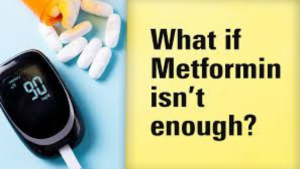Nerve Pain Isn’t Ordinary Pain—It’s a Different Beast
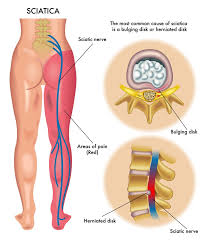
Gabapentin uses go far beyond its original role as a seizure medication—it’s now one of the most common prescriptions for nerve pain relief. It’s sharp, buzzing, stabbing, or burning—sometimes all at once. People describe it as “pins and needles,” “walking on broken glass,” or “tiny shocks under the skin.” Honestly, if you’ve ever stepped barefoot on a Lego, that’s the closest most people without nerve pain will understand. The difference? Lego pain fades. Neuropathy doesn’t.
You know what makes it tougher? It’s invisible. No cast, no bruise, no obvious mark. Friends may not understand why you cancel plans or why walking half a block feels like climbing Everest. That invisibility makes the hunt for relief even more urgent.
And that’s why gabapentin became such a big deal. Gabapentin uses started with seizures, but doctors quickly noticed patients also reporting relief from neuropathic pain. Over time, it became a staple. But gabapentin isn’t the only option. Duloxetine, amitriptyline, pregabalin, even opioids—they all get compared.
Oh, and then there’s the supplement aisle. Turmeric, valerian, St. John’s Wort—you’ve probably heard someone swear by them. But herbs can clash with prescriptions in ways you don’t expect. That’s where www.evaluatemymeds.com becomes handy, with its herb drug interaction checker to keep your plan safe.
Gabapentin 101: From Seizures to Nerve Pain

Let me explain how gabapentin works. Think of your nerves as neighbors yelling across the fence all night. Gabapentin doesn’t silence them entirely—it just lowers the volume so you can finally get some rest.
Here’s the rundown of gabapentin uses:
-
Nerve pain: diabetic neuropathy, shingles, post-surgical nerve damage.
-
Seizures: still used for partial seizures.
-
Other roles: restless legs, anxiety in some cases, hot flashes in cancer treatment.
On the technical side, gabapentin binds to calcium channels in nerve cells, calming excessive firing. In everyday language, it tells those noisy neighbors to keep it down.
Side effects? Sure—drowsiness, dizziness, maybe swelling. Not pleasant, but compared to opioids, it’s usually safer long-term. That’s why it’s often considered one of the best medications for nerve pain relief.
For a deeper breakdown of gabapentin uses and how they compare to other meds, check www.evaluatemymeds.com. It has detailed guides that cover everything from dosing basics to safety tips.
Gabapentin vs Duloxetine: Two Different Roads to Relief
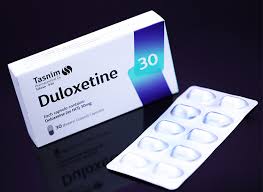
Here’s the thing: the gabapentin vs duloxetine comparison is like coffee versus tea. Both help, but in different ways.
-
Gabapentin: slows overactive nerve signals directly.
-
Duloxetine: an SNRI that changes how the brain perceives pain, by balancing serotonin and norepinephrine.
So which is better? Honestly, it depends. If your issue is primarily neuropathy, gabapentin often shines. But if depression or anxiety are also at play, duloxetine might be the smarter choice.
Side effects differ too. Gabapentin leans toward fatigue; duloxetine leans toward nausea and insomnia. Pick the one you can manage, not just the one that sounds strong.
Curious about the day-to-day differences? www.evaluatemymeds.com has practical guides comparing gabapentin with duloxetine so you can see how they stack up.
Gabapentin vs Tricyclic Antidepressants: Old-School Still Works
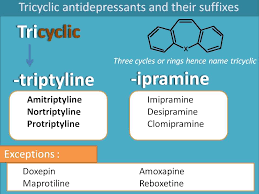
Before gabapentin, tricyclic antidepressants (TCAs) like amitriptyline were the heavy hitters. Doctors used them for decades to manage nerve pain. They still have a role, but now they share the stage.
In the gabapentin vs tricyclic antidepressants for nerve pain debate, here’s what stands out:
-
Effectiveness: TCAs can be effective, but gabapentin tends to be steadier.
-
Side effects: TCAs have a long list—dry mouth, constipation, blurred vision, even heart rhythm risks in older adults. Gabapentin’s issues—dizziness and drowsiness—are usually easier to manage.
-
Lifestyle fit: Amitriptyline makes you drowsy. Great if you’re battling insomnia, not so great if you’ve got an early commute.
The gabapentin vs amitriptyline choice often comes down to whether you value sleep more than morning clarity.
If you’re weighing this decision, www.evaluatemymeds.com offers patient-focused comparisons to help clarify the trade-offs.
Gabapentin vs Pregabalin: Same Family, Different Feel
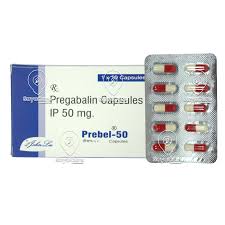
Pregabalin (Lyrica) is gabapentin’s close cousin. Think Coke vs. Pepsi: similar, but not identical.
Here’s how the gabapentin vs pregabalin for nerve pain breakdown looks:
-
Pregabalin tends to work faster—relief in days instead of weeks.
-
It’s more potent at lower doses.
-
It usually costs more than gabapentin, especially without insurance.
Side effects overlap: dizziness, weight gain, swelling. Some patients say pregabalin feels heavier on the body, like carrying an extra load.
So why switch? Usually when gabapentin doesn’t provide enough relief. Pregabalin is a top choice among gabapentin alternatives for neuropathy.
You’ll find an in-depth side-by-side on www.evaluatemymeds.com to help you decide which may fit your situation better.
Gabapentin vs Opioids: Safety vs Speed

Here’s where the conversation gets real: gabapentin vs opioids for chronic pain.
Opioids like morphine or oxycodone are powerful and fast. But they don’t actually work that well for nerve pain long-term, and the risks—dependence, tolerance, overdose—are massive.
Gabapentin doesn’t give the same instant knockout relief, but it doesn’t carry that dangerous baggage either. That makes it safer for steady management of nerve pain.
Sometimes doctors combine them—gabapentin plus a small opioid dose. Think of it like stretching orange juice with water: less intensity, but less risk too.
When Gabapentin Isn’t Enough
Here’s the truth: gabapentin doesn’t work for everyone. Pain might not improve enough, or the side effects might outweigh the benefits. That’s when gabapentin alternatives for neuropathy become important.
Options include:
-
Duloxetine or venlafaxine (especially with depression/anxiety overlap).
-
Amitriptyline (if sleep issues are major).
-
Pregabalin (for quicker or stronger relief).
-
Lidocaine patches or capsaicin cream (for localized pain).
-
Lifestyle shifts: physical therapy, yoga, or TENS therapy.
www.evaluatemymeds.com has a dedicated section on gabapentin alternatives for neuropathy to walk you through these choices in plain English.
Herbs and Supplements: The Wild Card

Let me explain why herbs complicate things. They sound safe—they’re “natural,” sold at grocery stores—but they’re not always harmless.
-
St. John’s Wort: speeds up drug metabolism, making duloxetine or amitriptyline less effective.
-
Turmeric and ginger: thin the blood, raising risks if you’re on other meds.
-
Valerian root: piles on sedation when combined with gabapentin.
That’s why checking herb medication interactions with a reliable herb drug interaction checker matters. Tools like the one at www.evaluatemymeds.com can help you spot dangerous overlaps before they cause harm.
Skipping that step is like throwing random spices into chili—sometimes it’s fine, sometimes it ruins the whole pot.
What’s the Best Medication for Nerve Pain Relief?
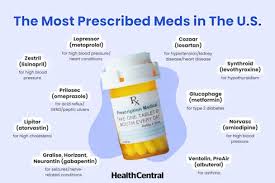
So, what’s the best medication for nerve pain relief? Honestly, there isn’t a single winner.
-
If mood issues are part of the picture, duloxetine may fit best.
-
If sleep is the bigger problem, amitriptyline could help.
-
If stronger, faster relief is the goal, pregabalin is an option.
-
If cost and safety matter most, gabapentin often tops the list.
Sometimes, it’s not about one pill. It’s a combination—gabapentin with a patch, duloxetine plus therapy, or even carefully chosen herbs (checked for herb medication interactions at www.evaluatemymeds.com).
Wrapping It Up
So where does all this leave us? Gabapentin uses reach from seizures to stubborn nerve pain, and it often stands as a first-line treatment because of its balance of safety and relief. Compared to duloxetine, amitriptyline, pregabalin, and opioids, gabapentin frequently comes out ahead for long-term management.
But pain treatment is personal. What works for your neighbor might not work for you. That’s why talking with your doctor, exploring safe alternatives, and using tools like the herb drug interaction checker on www.evaluatemymeds.com can make all the difference.
You know what? Living with nerve pain is unpredictable enough. Your treatment plan doesn’t need to be. The goal is simple: safe, steady relief that lets you get back to living your life.
Frequently Asked Questions (FAQ)
1. What are the main gabapentin uses?
Gabapentin uses include treating seizures, nerve pain from conditions like diabetes or shingles, restless legs syndrome, and sometimes even off-label issues such as anxiety or hot flashes. It’s widely prescribed because it calms overactive nerve signals, which reduces pain and discomfort.
2. Is gabapentin better than duloxetine for nerve pain?
Not always. In a gabapentin vs duloxetine comparison, gabapentin usually works better for neuropathy caused by diabetes or shingles, while duloxetine is often chosen when depression or anxiety is also present. Both can help with nerve pain, but the right choice depends on your health profile.
3. How does gabapentin compare to amitriptyline?
When it comes to gabapentin vs amitriptyline, the key difference is side effects. Amitriptyline is more sedating, which can help if pain interferes with sleep, but it may cause morning grogginess. Gabapentin is often easier to tolerate and safer for long-term use.
4. What’s the difference between gabapentin and pregabalin?
In the gabapentin vs pregabalin for nerve pain debate, pregabalin tends to act faster and is more potent at lower doses, but it’s usually more expensive. Gabapentin is cheaper, available in generic form, and often works well as a first choice.
5. Can gabapentin replace opioids for chronic pain?
Gabapentin and opioids treat pain differently. In the gabapentin vs opioids for chronic pain comparison, opioids provide rapid relief but come with high risks of dependency and overdose. Gabapentin doesn’t carry those risks and is safer for long-term management of nerve pain
External Link:
-
Mayo Clinic – Gabapentin overview
https://www.mayoclinic.org/drugs-supplements/gabapentin-oral-route/description/drg-20064011 -
NIH – Neuropathic Pain Treatments
https://www.ncbi.nlm.nih.gov/pmc/articles/PMC5707327/ -
WebMD – Duloxetine for Nerve Pain
https://www.webmd.com/drugs/2/drug-91491/duloxetine-oral/details -
MedlinePlus – Amitriptyline
https://medlineplus.gov/druginfo/meds/a682388.html -
FDA – Pregabalin (Lyrica) Information
https://www.fda.gov/drugs/postmarket-drug-safety-information-patients-and-providers/pregabalin-lyrica -
CDC – Opioid Safety
https://www.cdc.gov/opioids/basics/index.html
Internal Link:
-
Drug-Herb Interaction Checker Tool → https://evaluatemymeds.com/
-
Medical Terms Made Easy → https://evaluatemymeds.com/index.php/glossary-simple-medical-terms/
-
Gabapentin Uses Explained → https://evaluatemymeds.com/index.php/blog/
-
Understanding Your Medical Reports → https://evaluatemymeds.com/index.php/understand-my-medical-document/





